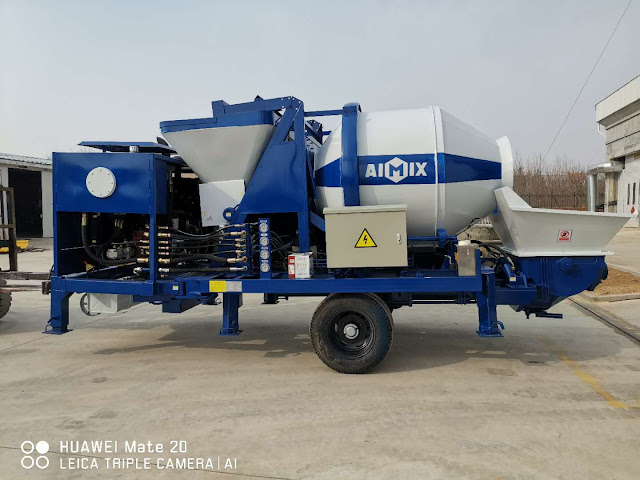Comparing The Installation Cycles Of Stationary And Mobile Asphalt Plants: Which Is More Efficient?
In the road and bridge construction industry, speed and efficiency are critical. Contractors are constantly seeking ways to accelerate project timelines without compromising on quality or cost. One of the most decisive factors in asphalt production planning is the type of plant selected—mobile asphalt plant or stationary asphalt plant—as this choice directly influences installation duration, operational flexibility, and overall productivity. In this article, we explore how installation cycles vary between the two options and which might be more efficient for different project scenarios.
Understanding The Basics Of Asphalt Plant Installation
Before diving into comparisons, it's important to understand what the installation cycle entails. This cycle includes equipment delivery, site preparation, foundation work, mechanical and electrical setup, calibration, and final commissioning. Each of these steps can vary in complexity depending on the type of asphalt plant chosen and the conditions on the ground.
For projects on a tight timeline or operating in remote areas, minimizing the installation period can lead to faster project kick-off and reduced idle costs. However, each plant(planta asfaltica movil) type brings its own trade-offs in terms of performance and logistics.
Installation Timeline Of Stationary Asphalt Plants
Extensive Civil Work And Infrastructure
The stationary asphalt plant is typically designed for long-term projects or permanent facilities. Its installation cycle is longer because it requires substantial civil work such as concrete foundations, anchoring systems, and utility infrastructure. Depending on the size and model, installation can take anywhere from 20 to 40 days or more, especially in areas with limited logistical support.
These plants offer high production capacity and long-term durability but demand thorough preparation. This includes site leveling, material storage planning, and ensuring environmental compliance.
Complex Assembly Process
A stationary plant often involves multiple modular components that need to be assembled on-site. This includes the drying drum, mixing tower, storage silos, and control systems. Each element must be precisely aligned and connected to function optimally. Skilled technicians and a well-coordinated crew are essential to ensure a safe and efficient installation.
Installation Timeline Of Mobile Asphalt Plants
Rapid Deployment Advantage
In contrast, a mobile asphalt plant is engineered for quick setup and dismantling. These plants come with integrated structures, pre-wired connections, and minimal foundation requirements. Many models are mounted on trailers or skids, allowing them to be transported and installed within 3 to 7 days, depending on the site's accessibility and the size of the unit.
This makes mobile asphalt plants ideal for temporary projects, rural roads, or emergency infrastructure repairs. The shorter installation cycle translates into lower labor costs and faster return on investment.
Fewer Site Requirements
Mobile plants are more forgiving in terms of site conditions. They often require only compacted ground or steel plates for support, avoiding the need for reinforced concrete foundations. This significantly reduces site preparation time and allows contractors to relocate the plant to different job sites without heavy logistical planning.
Efficiency Comparison And Strategic Use
Which One Is More Efficient?
When efficiency is measured by installation speed and mobility, the mobile asphalt plant clearly has the advantage. However, if efficiency is defined in terms of long-term productivity and operational scale, the stationary asphalt plant(planta de asfalto estacionaria) may come out ahead due to its superior capacity and stability.
The decision, therefore, hinges on the project type, duration, and available infrastructure.
Matching Equipment To Project Scope
For large-scale urban highway construction or permanent production bases, the investment in a stationary plant is often justified. It allows for greater output and long-term savings. On the other hand, small- to medium-scale contractors working on multiple, short-duration projects may find mobile plants more economical and efficient.
Many businesses today consider a hybrid approach—starting with a mobile unit and transitioning to a stationary setup once demand stabilizes.
What To Consider Before Choosing
When exploring an asphalt plant for sale(venta de planta de asfalto), buyers should consider more than just the price. Critical factors include:
-
Installation time and cost
-
Transport logistics and site accessibility
-
Local workforce skills and training
-
Maintenance and spare parts availability
-
Expected production volume and fuel efficiency
A holistic evaluation can help companies avoid installation delays and hidden costs.
Conclusion
The installation cycle is a vital factor in the overall efficiency of asphalt plant deployment. While mobile asphalt plants offer unmatched flexibility and faster installation, stationary asphalt plants provide long-term production strength and higher capacity. Understanding the trade-offs and aligning them with your project goals will help you make the right investment.
For contractors seeking an asphalt plant for sale that fits their business model, both mobile and stationary options have distinct advantages. Choosing the right one can significantly enhance your project outcomes and profitability.




Comments
Post a Comment